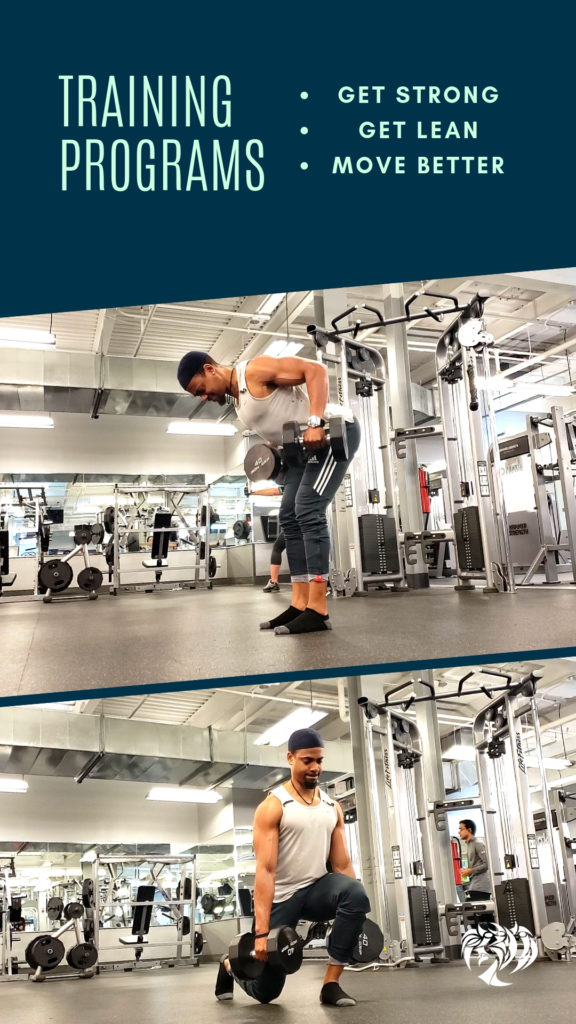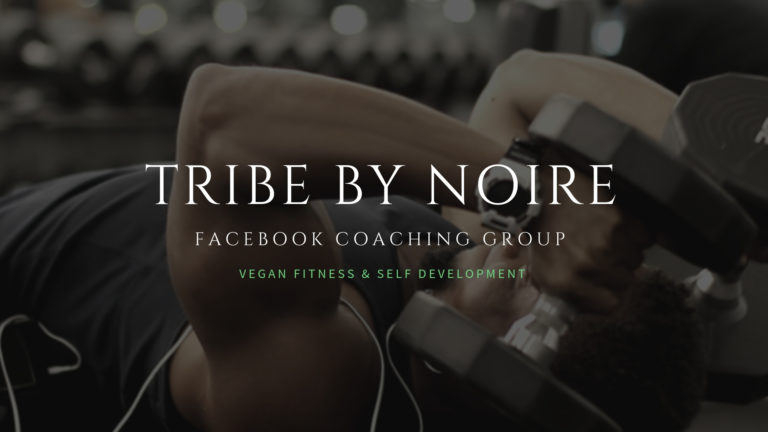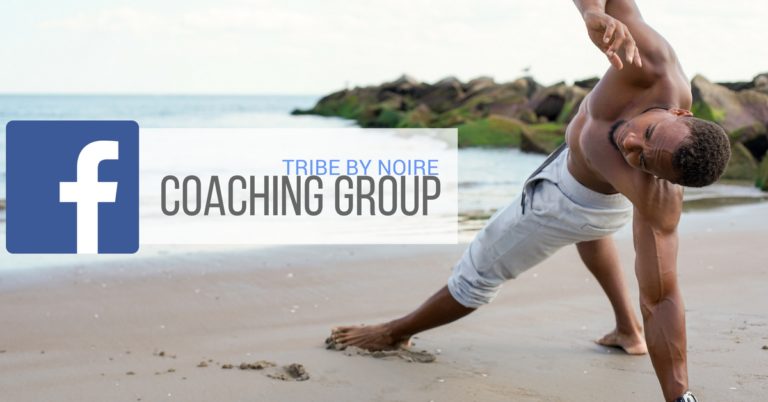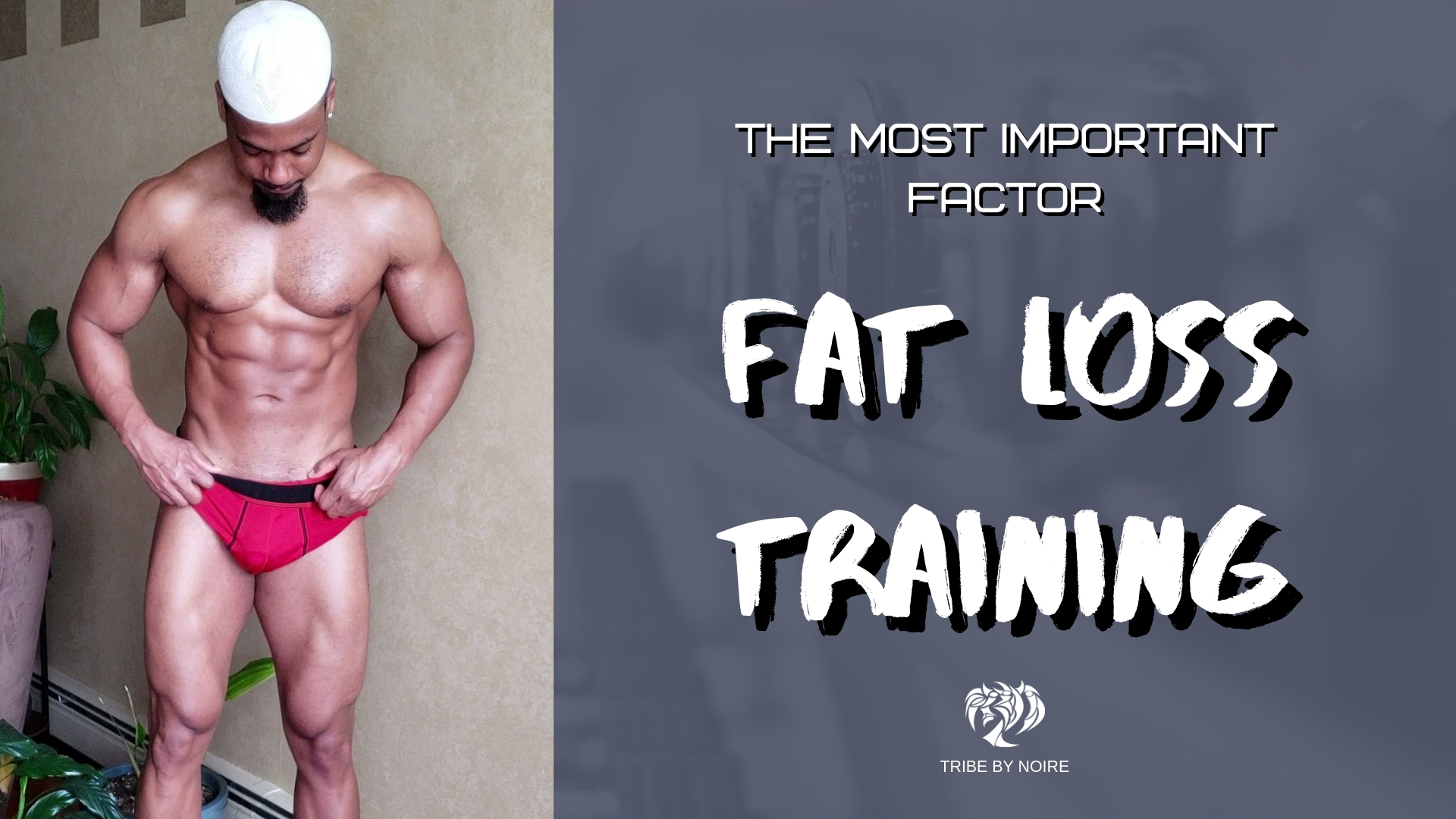
Tag: training strategies

Measuring Strength With RPE Vs 1RM Percentage Training
- Post author By Remson
- Post date December 3, 2018
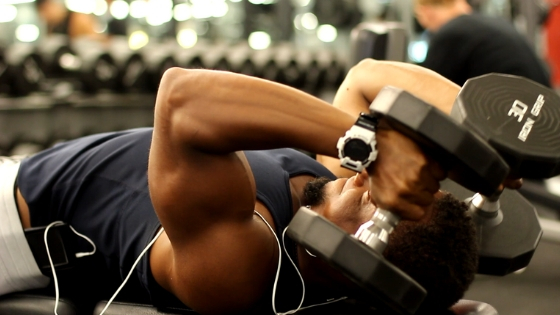
Building strength is paramount to creating a true body transformation. Developing strength is the key to building muscle and as your muscle mass grows, your ability to drop body fat increases. This is why you need reliable ways to measure strength. Anyone serious about getting the most results out there training needs the numbers.
You need to know how much weight you can lift and for how many reps. This is all based on effort and the 2 ways we measure that effort is relative perceived exertion (RPE) and percentage training based on your 1 rep max (1RM).

Relative Perceived Exertion (RPE)
RPE is short for relative perceived exertion. Its a measure of effort on a scale of 1-10 , 1 being the least amount of effort, and 10 being the most. With RPE you choose the weight you use relative to prior experience. Here’s an example.
- Your goal is to complete a set of 10 reps.
- Using your max effort your’re only able to finish 10 reps @ 225 lbs.
- This means that an effort level of 10 RPE is 225.
- Your RPE within a 10 rep range is relative to 225 lbs.
Here’s the next logical question. If 225 lbs is a 10 RPE for me, how do I figure what a 6,7,8, or 9 RPE is? Here’s how it works.
- 10 reps @ 10 RPE means I cannot do any additional reps at that weight.
- 10 reps @ 9 RPE means I can do 1 additional rep at that weight. (11 rep capacity)
- 10 reps @ 8 RPE means I can do 2 additional reps at that weight. (12 rep capacity)
- 10 reps @ 7 RPE means I can do 3 additional reps at that weight. (13 rep capacity)
- 10 reps @ 6 RPE means I can do 4 additional reps at that weight. (14 rep capacity)
RPE works for more than just sets of 10, but be mindful that anything under 6 RPE is a waste of time. I personally only use a 6 or 5 RPE for warm up sets.
1 Rep Max Percentage Training (1RM)
This method is more commonly used for the big 3 compound lifts like the squat, bench press, and deadlift. It’s also used in Olympic weightlifting for the barbell snatch and the barbell clean & jerk. Unlike RPE, percentage training is all based on effort relative to your 1 rep max. This makes sense for powerlifters, especially competitive ones because its all about how much weight you can lift one time. If you decide to use percentage training, I recommend training in between 70-95% of your 1RM.
CALCULATING YOUR 1 REP MAX
There’s a couple of ways to do this. The 1st method would be to start with a couple sets of 3-5 reps to warm up and then keep doing singles, gradually increasing the weight until you hit your max.
The 2nd way to do this would be more so for newbies to the grind. Run an entry level training program that uses a rep goal system and/or RPE. I have a variety of training programs designed for this at tribebynoire.com. At the end of that program you can calculate your 1 rep max by using a 1 rep max calculator. Go to your app store and search “1RM calculator” and download the one with the best rating. Its that simple! All you’ll need to do is input the heaviest weight you used and how many reps you completed. This is the safest and smartest route to go for new and even intermediate lifters.
When To Implement RPE & 1RM
Some coaches prefer to use RPE and others prefer to use 1RM percentages. Both methods work, but only if they’re implemented correctly. I prefer to use both methods, but for different purposes.
WHEN I USE 1RM PERCENTAGES
I only use this method with the big barbell lifts like the squat, bench, deadlift, and sometimes the overhead press, depending on how advanced the lifter is. The caveat with this method is that it becomes increasingly inaccurate with high reps sets (anything over 8 reps). This is because muscular endurance starts to become more of a factor as the set gets longer.
WHEN I USE RPE
This method works well with exercises that you would never test for 1 rep maxes, like lunges, lat pull downs, or tricep extensions. RPE works well for accessory exercises, and rep ranges of 8 or more.
Tribe By Noire
I’ve created this platform to help you become the most powerful version of yourself through fitness, plant based nutrition, and mindset coaching.
copyright © 2018 Tribe By Noire. All Rights Reserved
Exercise Selection And How To Make The Right Choices
- Post author By Remson
- Post date December 1, 2018
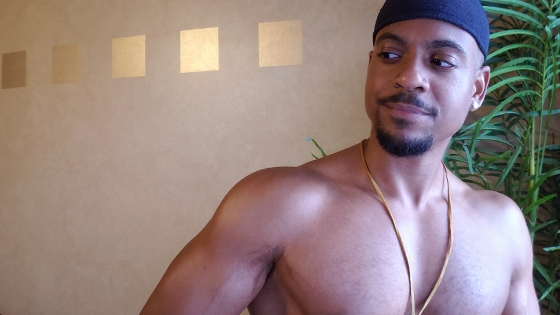
Tribe By Noire
Exercise Selection And How To Make The Right Choices
We all have our reasons for being regulars at the gym. Some people want to go to the gym just to have some adult playtime, while others just want to blow off steam, but maybe you want to create something real. Maybe you’ve made a commitment to yourself to achieve a true body transformation. If you’re working toward developing an athletic defined body that truly reflects the work you put in, then the information I’m giving you here is something you NEED to know.
I’m gonna go point by point through a few key rules and considerations when deciding what to do in your training routine
1. Keep It Simple
One of the biggest mistakes you can make in your training is implementing too many variations of the same kind of movement. Choose a primary lift and 1 or 2 accessory exercises for each muscle group and work on developing your strength and technique as much as possible in those exercises. Here’s a few examples of the best exercises for each muscle group.
Glutes & Quads
- (Primary) Barbell Back Squat
- (Accessory) Barbell Hip Bridge
- (Accessory) Dumbbell Bulgarian Split Squat
Glutes & Hamstrings
- (Primary) Barbell Conventional Deadlift
- (Accessory) Dumbbell Bulgarian Deadlift
- (Accessory) Prone Leg Curl
Chest, Shoulders & Triceps
- (Primary) Barbell Bench Press
- (Accessory) Dumbbell Shoulder Press
- (Accessory) Weighted Dip
Back, & Biceps
- (Primary) Barbell Hang Row
- (Primary) Weighted Pull Up
- (Accessory) Dumbbell One Arm Row
Abs & Obliques
- Cable Wood Chop
- Weighted Sit Up
- Hanging Leg Raise
Knowing What's worth Your Time
Starting your 1st set of the workout puts you on the clock and your workouts should only be around 45-60 minutes, 90 minutes at the most. This means you just simply do not have the time to goof around with exercises that yield little benefit. Your primary focuses should be the big compound lifts and 1-2 accessory exercises that help you develop those lifts the most.
Here’s a quick hypothetical for you. If you could only choose 1 exercise to build your chest, which would it be, cable chest flys or Bench Press? The best choice would fit this criteria.
- Its an exercise that I can add a substantial load to.
- It develops the other smaller assistance muscles.
- It won’t cause muscular imbalances.
Do What Your Body Responds To Most
There’s a whole variety of different ways to hit a muscle or muscle group, but the ideal exercise is the one that gives you the most gains. For example, my quads respond very well to the back squat, but yours may respond much better to the front squat. If your primary focus for squatting was getting the most growth in your quads, you would choose the front squat.
Another example would be grip width and stance width.
- Bench Press – A more narrow grip on the bench press would target your shoulders and triceps more. A wider grip would activate more chest and shorten the range of motion.
- Barbell Rows – A wide grip would target your rear delts and traps a lot. A narrow grip would target your lats mainly.
- Sumo Deadlift – This wide stance deadlift is more geared towards developing a rounder fuller butt by targeting your glute medius way more than a narrow style deadlift.
- Conventional Deadlift – This deadlift forces you to hinge more at the hip which places more tension on your back and hamstrings.
There’s tons of other examples, but these are some big ones.
Weaknesses and/or Injuries
Injuries are pretty easy to figure out for the most part, but identifying weaknesses is what you may need more of a trained eye for. Examples of weakness would be bad posture, or just bad form in general due to certain muscles not firing the way they should.
Weak quadriceps would cause you to excessively lean forward in a squat. A good remedy for this would be goblet squats, or some kind of front loaded variation. These front loaded variations are meant to get you in a more vertical position that forces you to engage your quads more, rather than compensate using other muscles.
Other indications of weakness would be things like relative strength between lifts. For example, you should be able to row the same weight you bench press. Being able to press more than what you pull is a clear sign of a weak back and this will ultimately lead to injury.
We could talk for a whole hour just on this topic alone, but if you need any further answers, feel free to ask your questions in the comments, or request a consultation here.
Tribe By Noire

I’ve created this platform to help you become the most powerful version of yourself through fitness, plant based nutrition, and mindset coaching.
copyright © 2018 Tribe By Noire. All Rights Reserved
Full Body Training Vs Body Part Split Training For Muscle Hypertrophy
- Post author By Remson
- Post date November 27, 2018
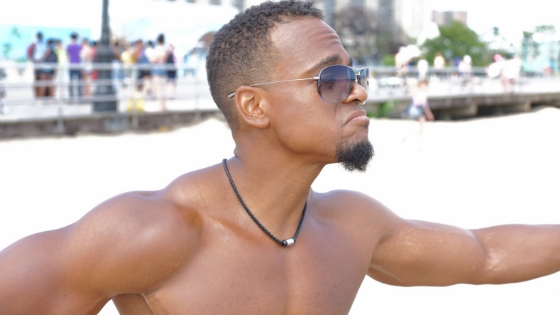
Tribe By Noire
Full Body Training Vs Body Part Split Training
A relatively new debate has risen in the marketplace of fitness in regards to muscle hypertrophy. The most common approach to muscle building for the most part has been body part split routines, but now this method is being challenged by the idea that full body training is actually superior. There are even scientific studies that show full body training is the way to go. There’s a lot of nuance in this discussion, so I’m gonna break this down for you, so you can understand it from every angle.
The 3 Most Important Factors For Muscle Building
Understand that no matter what training split you choose, it will only work if its implemented correctly. In regards to muscle building your program needs these 3 things.
- Frequency – This is how many times per week you train a muscle. Ideal frequency should be 2-3 times per week with 24-48 hours in between.
- Volume – This is your weekly total of how many sets and reps you do. For hypertrophy, volume should be between 14-20 sets per week.
- Intensity – This is how hard you train a muscle within a training session. The weight you use on the big compound lifts should be between 70-85%.
All three of these factors have to be in your program with frequency and volume being the top priorities. The training split you choose will determine the levels that these factors will be implemented at.
Full Body Training
Full body training is pretty self explanatory. On each training day you would target all the major muscle groups with mostly compound exercises that target,
- Pressing muscles
- Pulling muscles
- Lower body muscles
- Core muscles
Here’s what a week of training on a full body program would look like.
Day 1
- Back Squat
- Romanian Deadlift
- Bench Press
- Pull Up
- Overhead Press
- Wood Chop
Day 2
- Conventional Deadlift
- Bulgarian Split Squat
- Incline Press
- Chest Supported Row
- Dip
- Hanging Leg Raise
Day 3
- Back Squat
- Push Press
- Hang Row
- Close Grip Bench Press
- Glute Ham Raise
- Weighted Sit Up
Full body training is all about high frequency training and the big compound movements. According to scientific research, full body training yields better results than body part split training because of the high priority on frequency. The high frequency also offsets the fact that volume is not going to be as high as a body part split. Doing 20 sets a week on all the big lifts will burn you out and ultimately cause you to lose muscle and strength. You can reach 15 sets weekly by doing 3 sets on each muscle group on the 3 days of training.
This training split would be ideal for you if,
- You only have 3 days to commit to training.
- You need to prioritizing training for your sport.
- You struggle with being consistent with training.
The Upper Lower Split
The upper lower split is also pretty self explanatory. You alternate between an upper body training day and a lower body training day. Here’s what a week of training on an upper lower split would like.
Day 1
- Back Squat
- Romanian Deadlift
- Walking Lunge
- Prone Leg Curl
- Cable Wood Chop
- Hanging Leg Raise
Day 2
- Chest Supported Row
- Bench Press
- Lat Pull Down
- Overhead Press
- Spider Curl
- Weighted Dip
Day 3
- Conventional Deadlift
- Bulgarian Split Squat
- Walking Lunge
- Prone Leg Curl
- Cable Wood Chop
- Hanging Leg Raise
Day 4
- Incline Press
- Lat Pull Down
- Chest Press
- Single Arm Row
- Skull Crushers
- Hammer Curl
With the upper lower split, frequency is reduced to 2x per week, but its easier to reach a training volume of 20 sets per week. This is the training split I use mostly and what I’ve known to work for most people in my experience. It gives you the benefits of a body part split without sacrificing too much frequency. With this split you also get 3 off days to work on things like mobility and cardio conditioning.
Push Pull Legs
This training split is not for the faint of heart. This isn’t for the people who “just want to build some muscle.” This is for those who are truly dedicated to building a phenomenal physique. The 20 sets of volume is very easy to reach with this training split, and the intensity as well. The main draw back to this training split is that it is 6 days per week.
2x Per Week
Push
- Bench Press
- Incline Press
- Arnold Press
- Lateral Raise
- Skull Crushers
- Weighted Sit Up
Pull
- Hang Row
- Lat Pull Down
- Single Arm Row
- Reverse Fly
- Barbell Bicep Curl
- Spider Curl
Legs
- Barbell Hip Bridge
- Back Squat
- Romanian Deadlift
- Bulgarian Split Squat
- Prone Leg Curl
- Hanging Leg Raise
This type of training split makes room for a great deal of exercise variation and rep schemes. Hitting 20 sets per muscle group shouldn’t be a problem, as long as you do all 3 workouts twice per week. I wouldn’t advise you to do this training split if you struggle with motivation, consistency, and/or a busy schedule.
In conclusion, all methods work well if implemented correctly, but the determining factors in which route you choose depends on your lifestyle and goals..
Tribe By Noire

I’ve created this platform to help you become the most powerful version of yourself through fitness, plant based nutrition, and mindset coaching.
copyright © 2018 Tribe By Noire. All Rights Reserved
Developing Strength 1st Before Hypertrophy Training
- Post author By Remson
- Post date July 2, 2018
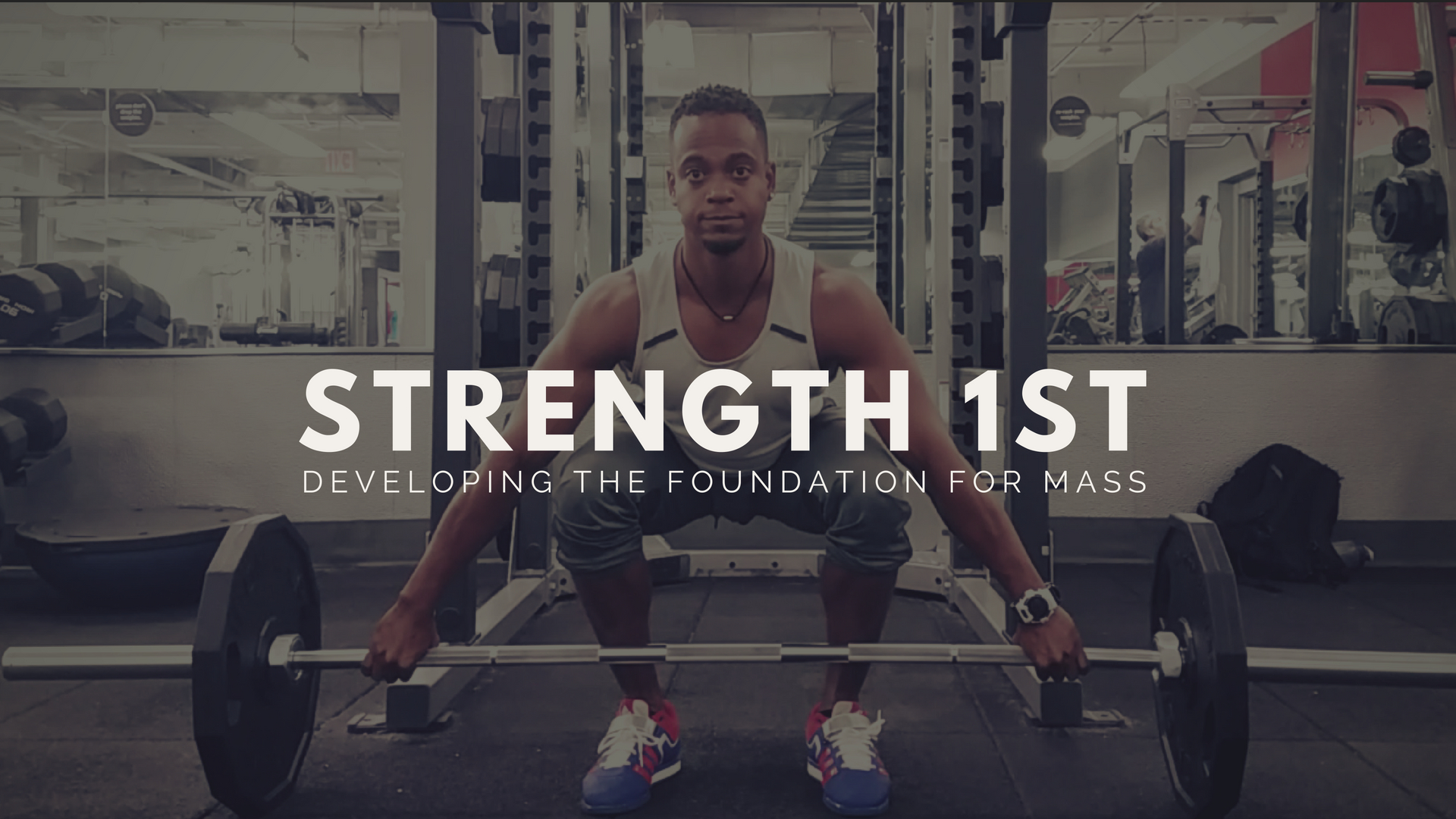
The correlation between strength & mass
Most of us understand that there is at least some sort of correlation between strength and muscle size, but the question is, if you want to gain muscle size, what’s the most effective way to do it. The strongest people we see tend to have the most muscular bodies, so by that logic we should just train for strength right? That sounds reasonable enough, but the more you study the science on this topic, the more complicated the answer becomes. Stay with me for a bit here as a break down and explain the process.
the 3 steps of physique building
1. cutting phase
- Ideally you want to get to your ideal body fat while gaining muscle at the same time. This is especially easier to do for people who are new to the gym. Doing cardio and fancy complicated exercises to get you winded is not really what I advise because we want to cut, not deflate. Instead you’d want to take the fundamental movements like squatting, deadlifting, pressing, and rowing, and do them with some fairly high rep sets like 16-20 reps. Throw some giant sets and super sets in there and you’re good to go.
2. strength phase
- Once you’ve cut down to your ideal body fat level, or at least close to it, you need to start developing a real foundation for strength. The primary reason for this is that muscle grows primarily to facilitate strength and force production. Getting stronger increases your capacity for muscle growth. A strength phase of training has 2 primary objectives, which are to increase strength and quantify strength. This phase of training is going to be with pretty low volume with sets typically not exceeding more than 10 reps. By the end of your strength phase you should know your 1 rep maxes for each fundamental lift. Your 1 rep maxes will be the basis for step 3. 8-12 weeks at a time is good duration for this phase.
3. mass phase
- This phase is all about hypertrophy, which is the scientific term for increasing muscle mass. Unlike most training programs, this type of training is not focused on increasing the amount of weight you’re lifting in each set. The focus is increasing the amount of reps or sets, from week to week. I suggest working with weight that is either 70% of your 1 rep max, or in between 60-80% of your 1 rep max. The rep ranges I would suggest here are 6-8, and for accessory exercises I would suggest 10-12 or 16-20 reps.
Tribe By Noire

I’ve created this platform to help you become the most powerful version of yourself through fitness, plant based nutrition, and mindset coaching.
copyright © 2017 Tribe By Noire. All Rights Reserved
Dynamic Warm Up And Mobility Training Guide
- Post author By Remson
- Post date June 16, 2018
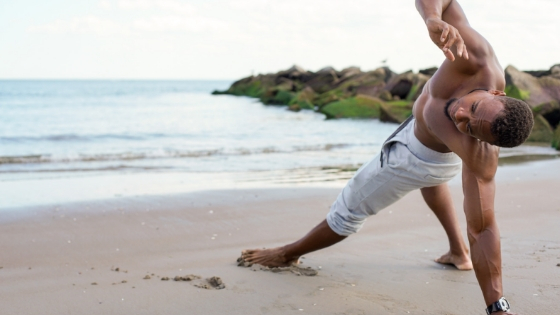
Get The Right Start
We all know what a warm up is, at least some what. To some of us, its a quick 10 minute run on the treadmill, or a couple of basic stretches we learned in high school. Most people are under the assumption that the purpose of the warm up is to obviously… warm up. This is true, but your warm up should do much more for you than just raise your body temperature.
A good warm up should set you up to perform at your best by achieving 3 major goals. Those 3 goals are,
- Movement Prep
- Increase range of motion (ROM)
- Muscular activation
Skipping this process leads to training with poor form which can prevent you from building muscle, gaining strength and ultimately lead to some pretty nasty injuries aka getting snapped up. You do NOT want to get snapped up because that can put you out of the gym for weeks and even months.
Let’s take a deep dive into the dynamic warm up phase and mobility training.
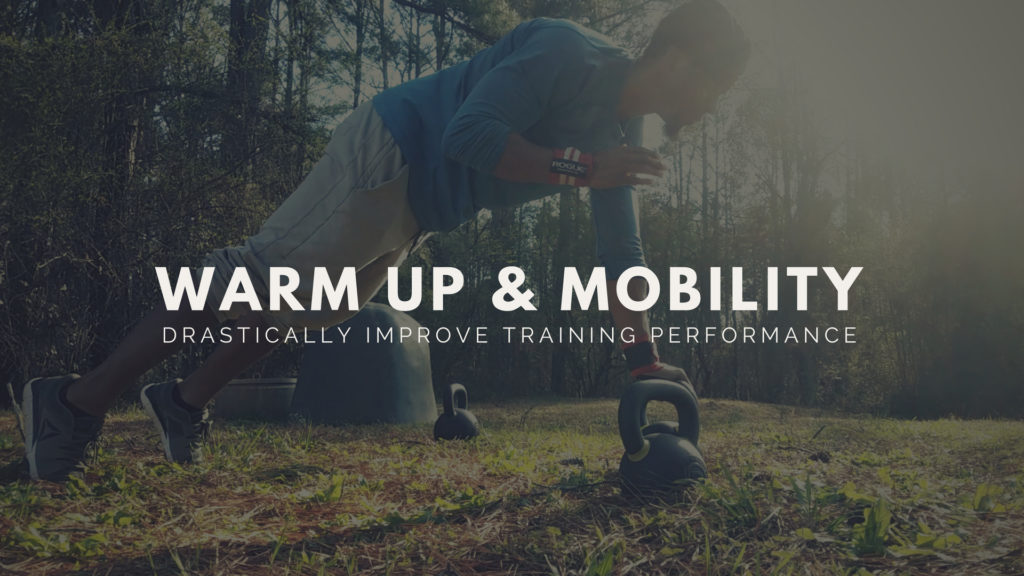
Intro To Dynamic Warm Up & Mobility
At the start of each workout should be exercises that prepare your body to perform the session’s exercises at an optimal level. For example, if you’re squatting, the dynamic warm up and mobility exercises should be specific to the muscles, joints, and movement patterns involved in the squat. The same rule applies to any other movements like pressing, rowing, deadlifting, etc.
Movement Prep
Movement prep is where you perform exercises that mimic the actual exercises you’re getting ready for. This primes your nervous system for that particular movement pattern. An example of this would be doing a body weight squat before doing squats with weight. This also allows you to see and feel your form and make any correction you need to before you get started.
Increase Range Of Motion
Increasing range of motion facilitates ease of movement and greater force production, which can also drastically reduce injury and increase muscular growth. For example, lengthening your hamstrings will get you a better deadlift which leads to strong thick hamstrings and glutes. Lengthening the muscle fibers of your chest will allow you to have greater movement at the shoulder blades, which in turn result in a bigger chest and back.
Muscular Activation
Any compound movement can feel very uncomfortable and lead to injuries over time if certain muscles aren’t firing like they’re supposed to. For example, having inactive glutes can lead to deadlifts being too stressful on the lower back and squats being too stressful on the knees. Inactive upper and mid back muscles can lead to shoulder injuries during bench pressing and shoulder pressing. These are the types of problems that are super common and you’re probably dealing with some of this yourself.
Squat Dynamic Warm Up
There’s a few things to consider when warming up for an exercise like the squat. Whether you’re squatting with a barbell, dumbbells, kettlebells, or even just body weight, the considerations are pretty much the same.
- Hip and ankle mobility
- Muscular activation of the glutes and quadriceps
- Maintaining spinal extension
6 reps
12 reps per side
12 reps per side
Deadlift Dynamic Warm Up
Deadlifts are all about maximizing the strength and efficiency of your hip hinge. Even though deadlifts require a full body effort, the glutes and hamstrings are the primary drivers. A few things to consider when warming up for this movement are,
- Hip and hamstring mobility
- Muscular activation of the glutes and lats
- Maintaining spinal extension
8 reps
12 reps
12 reps per side
Shoulders & Chest Dynamic Warm Up
Warming up for an upper body workout pretty much works the same whether you’re pushing or pulling. The reason for this is the fact that both push and pulling both rely on the efficiency of movement at the shoulder complex. Pushing and pulling are separated into two categories, vertical and horizontal. You can prep for both of these at the same time. A few key consideration here are,
- Mobility of the shoulders and scapula in all planes of motion
- Muscular activation of all 3 shoulder heads, rotator cuff, and scapula muscles
12 reps
12 reps
8 reps
Tribe By Noire

I’ve created this platform to help you become the most powerful version of yourself through fitness, plant based nutrition, and mindset coaching.
copyright © 2018 Tribe By Noire. All Rights Reserved
3 Steps To Build Your Ideal Body In The Gym
- Post author By Remson
- Post date January 20, 2018
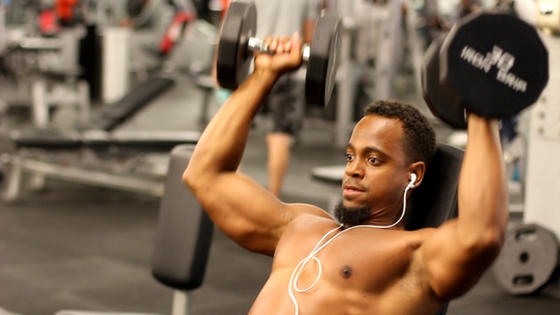
When I say “build your ideal body” I’m referring to a natural, athletic, healthy, human form. Its up to you how lean or muscular you want to look, and how large you want certain muscles to be, but achieving that look in an efficient time frame all boils down to these 3 steps.
- Body Recomposition
- Strength Training
- Hypertrophy Specific Training
For the specifics on how to do this, keep reading below.

Step 1 - The Cutting Phase
The cutting phase is just a simple and sexy way of saying body recomposition phase. I have to make it clear that I am not advocating for cutting in the traditional sense of weight loss. The goal is specifically to reduce BODY FAT not just any ol’ weight loss. You don’t want to lose a lot of weight, but not really lose much body fat because that’s how you end up in the skinny fat category. If you already are in the skinny fat category, give this article a look here.
The cutting phase should be a hypertrophy specific style of training. This style of training will get you to build muscle as you reduce body fat. This is important for building that ideal body you want, fast! In my experience, clients have been able to drop 4-6% body fat in 4 weeks in this phase. Clients who need to lose a lot of weight, lose and average 6-8 lbs a week. Here’s some examples of what that would look like.
4 Week Routine
Day 1
Goblet Squat
3 sets x 10 rep min – 20 rep max
Stiff Leg Deadlift
3 sets x 10 rep min – 20 rep max
Walking Lunges
1 set x 100 reps
Open To Close Hollow
3 sets x AMRAP
Day 2
Barbell Row
3 sets x 10 rep min – 20 rep max
Lat Pull Down
3 sets x 10 rep min – 20 rep max
Chest Press
3 sets x 10 rep min – 20 rep max
Shoulder Press
3 sets x 10 rep min – 20 rep max
Day 3
Goblet Squat
3 sets x 10 rep min – 20 rep max
Stiff Leg Deadlift
3 sets x 10 rep min – 20 rep max
Walking Lunges
1 set x 100 reps
Open To Close Hollow
3 sets x AMRAP
Day 4
Barbell Row
3 sets x 10 rep min – 20 rep max
Lat Pull Down
3 sets x 10 rep min – 20 rep max
Chest Press
3 sets x 10 rep min – 20 rep max
Shoulder Press
3 sets x 10 rep min – 20 rep max
- Start with a weight you can do a maximum of 20 reps with
- Increase the weight by 5-10% each set
- Do as many reps as possible (AMRAP) on each set, with a minimum of 10 reps each set
- Rest for 60-90 seconds in between each set
Step 2 - The Strength Phase
After you’ve completed the cutting phase and have dropped a considerable amount of body fat, you should start a strength training program. Even if your goal may not necessarily be to get as strong as possible, this is still a key phase in reaching your ideal body. There are 3 main things that your strength phase should achieve.
- Develop a good foundation of strength
- Improve your strength capabilities
- Accurately quantify your strength
This style of training focuses on a much lower amount of reps, but the weight will be considerably higher. Each training day should revolve around the main compound lifts such as the barbell squat, deadlift, bench, overhead press, and row. This type of training will also get you to increase muscle mass and drop body fat as well even though those are not the primary focuses here.
Here’s an example of what this type of training routine would look like.
4 Week Routine
Day 1
Barbell Deadlift
4 sets x 8 reps (last set AMRAP)
Barbell Back Squat
4 sets x 8 reps (last set AMRAP)
Dumbbell Bulgarian Split Squat
3 sets x 12 reps per side (last set AMRAP)
Supine Leg Raise Arc
4 sets x AMRAP
Day 2
Barbell Row
4 sets x 8 reps (last set AMRAP)
Barbell Bench Press
4 sets x 8 reps (last set AMRAP)
Dumbbell Incline Press
3 sets x 12 reps (last set AMRAP)
Barbell Bicep Curl
4 sets x 12 reps (last set AMRAP)
Day 3
Barbell Overhead Press
4 sets x 8 reps (last set AMRAP)
Pull Up
4 sets x AMRAP
Dumbbell S. Arm Row
4 sets x 12 reps per side (last set AMRAP)
Prone External Knee Tuck
4 sets x AMRAP
- Start with a weight you can only do 12 reps with
- Increase the weight by 5-10% each set
- Do as many reps as possible on the last set
- rest for 2 minutes in between each set
- Increase the weight each week by 5-10% each week
- Decrease the amount of default reps each week by 2 reps
- Cut the amount you lift by 30-50% on week 4 to deload
Document all sets and reps and weight you used throughout this process. Week 3 will be the toughest week where you lift the most weight. To calculate your new one rep maxes, download an app called 1 Rep Max on your phone. Input the heaviest weight you did and how many reps you completed. The app will do the calculations for you.
Step 3 - The Mass Phase
The key focus in this phase is filling out your frame by building new lean muscle mass. For guys this would be a concentration on developing the back, chest, shoulders, arms, and thighs. For women the concentration would be on developing the lower body with an emphasis on glutes and hamstrings.
This training phase requires a hypertrophy specific program where the amount of sets and/or reps increase over time. The weight should be around 65% of your 1 rep max (1RM). You should be able to calculate your 1RM and percentages using the data from your strength phase. Ideally, you’d target each muscle group 2-4 times per week in order to fully maximize results. An effective training split for this could be full body, or an upper lower training split.
Here’s some examples.
4 Week Routine (Men's)
Day 1 (Lower body)
Barbell Squat
5 sets x 8 reps
Barbell Deadlift
4 sets x 8 reps
Dumbbell Reverse Lunge
4 sets x 8 reps
Alternating Crossbody Jack Knife
3 sets x AMRAP
Day 2 (Upper body)
Barbell Row
5 sets x 8 reps
Barbell Incline Bench Press
5 sets x 8 reps
Pull Up
4 sets x AMRAP
Barbell Curl
4 sets x 8 reps
Day 3 (Lower body)
Barbell Squat
5 sets x 8 reps
Barbell Deadlift
4 sets x 8 reps
Dumbbell Reverse Lunge
4 sets x 8 reps
Alternating Crossbody Jack Knife
3 sets x AMRAP
Day 4 (Upper body)
Barbell Row
5 sets x 8 reps
Barbell Incline Bench Press
5 sets x 8 reps
Pull Up
4 sets x AMRAP
Barbell Curl
4 sets x 8 reps
4 Week Routine (Women's)
Day 1
Barbell Squat
5 sets x 8 reps
Barbell Hip Bridge
4 sets x 12 reps
Dumbbell Reverse Lunge
4 sets x 8 reps per side
Alternating Crossbody Jack Knife
3 sets x AMRAP
Day 2
Barbell Deadlift
5 sets x 8 reps
Barbell Hip Bridge
4 sets x 12 reps
Close Grip Pull Up
4 sets x AMRAP
Dumbbell Chest Press
4 sets x 8 reps
Day 3
Barbell Squat
5 sets x 8 reps
Barbell Hip Bridge
4 sets x 12 reps
Dumbbell Reverse Lunge
4 sets x 8 reps per side
Crossbody Jack Knife
3 sets x AMRAP
Day 4
Barbell Deadlift
5 sets x 8 reps
Barbell Hip Bridge
4 sets x 12 reps
Close Grip Pull Up
4 sets x AMRAP
Dumbbell Chest Press
4 sets x 8 reps
- Start with 65% of your 1 rep max
- Add 1-2 reps to each set every week for 3 weeks
- rest for 90 seconds – 2 minutes
- Cut the amount of reps down by 30% on week 4 to deload
Phase Duration
The length of each phase depends on what your goals are, and what your level of fitness is. Typically the cutting phase could take anywhere from 8-12 weeks. The strength phase can be done 4-8 weeks at a time and the mass phase can be run continuously over a period of 3-6 months. Do your best to maintain a low body fat percentage throughout the mass phase in order to avoid frequent cutting phases.
Tribe By Noire

I’ve created this platform to help you become the most powerful version of yourself through fitness, plant based nutrition, and mindset coaching.
copyright © 2018 Tribe By Noire. All Rights Reserved
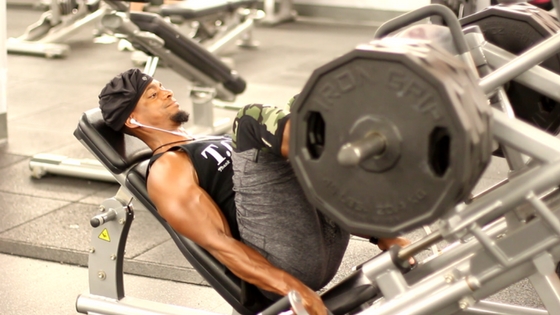
With each exercise, you’d do a given amount of repetitions (reps) and you do that amount of reps for a given amount of sets. For example if you’re doing bicep curls, you could be doing 3 sets of 10 reps, or 3×10. If that sounds confusing for you, think of it as 30 reps divided into 3 sets.
When considering how many sets and reps to do in your training routine you have to consider a variety of different aspects.
- What is your training goal?
- What muscle fibers are you targeting?
- How much time do you have to train?
- How much training volume do I need?

Sets & Reps For Muscle Building
In order to effectively increase muscle mass, you need to maximize tension and muscle fiber recruitment during each exercise. There are a few options for getting this done, but in regards to sets and reps there’s 2 options.
- Use a heavy load with less reps.
- Use a moderate to light load with more reps.
The heavier loads will increase your strength and target your type 2 muscle fibers, which have the greatest potential for size development. Ideally the heavy lifting should come at the beginning of your training session. Lifting heavy after already being fatigued will limit training performance in these big lifts, thus limiting the results.
The moderate to lighter loads will target your type 1 muscle fibers. Training these muscle fibers will increase muscular endurance, blood flow, and improve stability. These lifts are secondary to your heavier lifts being that they perform better under sustained fatigue. An added bonus to training these muscle fibers is the drastically increased blood flow to the muscle that creates “the pump”.
Effectively training both muscle fiber types in the most strategic way will really maximize muscle growth as well as improve strength and performance. Here’s a quick example of what this looks like.
PRIMARY EXERCISES
8 Reps
6 Reps
4 Reps
SECONDARY EXERCISES
20 Reps
16 Reps
12 Reps
Optimal Rep Ranges For Muscle Building
The most common method used for building muscle is choosing a specific number of reps for each set. An example of this would be 1st set for 10 reps, 2nd for set 8 reps, 3rd set for 6 reps. This can work, but a major problem here is that rigidly sticking to the amount reps can cause you to leave a lot of training intensity on the table. Let’s say the goal is 8 reps, but you’re able to squeeze out 12 reps, did you maximize training intensity on that set if you stopped at 8? Did you maximize muscle tension?
If training intensity and maximal muscle tension is what creates the results we want, then the reps should facilitate the focus, not BE the focus. This is why rep ranges are ideal. An example of this would be 3 sets where each set has a rep range of 10-6. Start with a weight that you know you can get a maximum of 10 reps with. Increase the weight on each set and do as many reps as possible (AMRAP) in each set.
Both increasing the weight on each set and striving for the maximum amount of reps each set will allow you to get the most out of every workout. When you put everything together in a full training routine, this is what it look like.
1ST TRAINING DAY
Barbell Squat
3 Sets x 8-4 Reps (AMRAP)
Barbell Deadlift
3 Sets x 8-4 Reps (AMRAP)
Barbell Hip Bridge
3 Sets x 8-4 Reps (AMRAP)
Dumbbell Walking Lunge
3 Sets x 20-12 Reps (AMRAP)
2nd Training Day
Barbell Overhead Press
3 Sets x 8-4 Reps (AMRAP)
Barbell Bench Press
3 Sets x 8-4 Reps (AMRAP)
Dumbbell Incline Press
3 Sets x 20-12 Reps (AMRAP)
Dumbbell Lateral Raise
3 Sets x 20-12 Reps (AMRAP)
3rd Training Day
Barbell Row
3 Sets x 8-4 (AMRAP)
Weighted Pull Up
3 Sets x 8-4 (AMRAP)
Barbell Pull Over
3 Sets x 20-12 Reps (AMRAP)
Dumbbell Reverse Fly
3 Sets x 20-12 Reps (AMRAP)
*NOTE
This just serves as one example of this rep scheme idea just to give you a visual of what it looks like. This is a great setup to follow, but there are many others that also work really.
Tribe By Noire

I’ve created this platform to help you become the most powerful version of yourself through fitness, plant based nutrition, and mindset coaching.
copyright © 2018 Tribe By Noire. All Rights Reserved
The Push / Pull / Legs Body Part Split Explained
- Post author By Remson
- Post date November 14, 2017
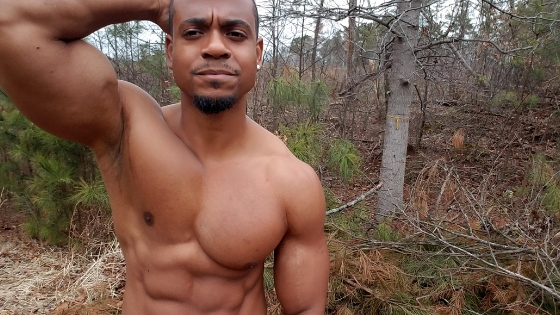
Push-Pull-Legs Split Explained
There are many different types of training splits to choose from, but right now I’m going to put some focus on one of my absolute favorites. The push, pull, legs training split is a favorite of mine, not just for the results I’ve gotten from it, but also for what its done for my training clients.
Here’s a few ways to tell if this training split is for you.
- You’re only able to train 3 days per week.
- You get bored with a conventional body part split.
- You’re an athlete who practices a sport multiple times a week.
- You’re a natural lifter trying to build an impressive physique.
- You want to do powerlifting or powerbuilding.
How This Training Split Works
The push pull legs training split is divided into 3 primary training days. On the push training day, you train all of the muscles that produce or assist in pushing movements. These muscles are typically the ones you use in bench pressing, shoulder pressing, and abs. On the pull training day, you’d train all of the muscles that are opposite from pushing. This would be the muscles that you use during rows, pull ups, and deadlifts. The leg day is reserved for all of the muscles you have from the waist down. The primary exercises on the leg day would be squats, lunges, deadlifts, and hip bridges.
In my personal experience and with clients, the best physique results come when the 1st day is legs, 2nd day is push, and the 3rd day is pull, with a rest day between each. Leg day is the most demanding, so prioritizing it on day 1 allows you to come into the gym fresh and fully recovered. Push I put at number 2 rather than pull because push day typical doesn’t call for the use of any of the muscles from leg day.
Here’s some quick examples of how it would look.
LEGS
Squat
Deadlift
Hip Bridge
lunge
PUSH
Shoulder Press
Chest Press
Tricep Dip
Abs
PULL
Row
Pull Up
Bicep Curl
Reverse Fly
How Many Exercises Per Training Day
The answer to this question really depends on what your focus is and what your strengths and weaknesses are. Typically I think in terms of primary and accessory. So as an example, if the focus on push day is to develop bigger, shoulders, you would do 2 – 3 exercises for that muscle group. The Primary exercise would be a barbell press, single arm dumbbell press, and lateral raises. Then you’d use 1-2 exercises for chest triceps and abs. Over all, you’re looking at 5-8 exercises per training day.
Push Pull Legs For Powerlifting
Powerlifting revolves around the big 3 barbell lifts, bench press, squat, and deadlift. This is perfect for a 3 day training split because you can now have each training day dedicated to improving a specific lift. This means you can focus on strength, technique, and volume all at the same time. An important factor for natural lifters is the emphasis on recovery. Having more rest days means you get to go all out on your training days and see consistent gains without reaching burnout.
Here’s an example of what training days would look like.
DEADLIFT
Barbell Deadlift
Single Arm Row
Single Arm Farmers Carry
Hanging Leg Raise
BECH PRESS
Barbell Bench Press
Dumbbell Incline Press
Half Kneeling Single Arm Press
Prone Tricep Press
SQUAT
Barbell Back Squat
Barbell Hip Bridge
Goblet Reverse Lunge
Prone External Knee Tuck
Cardio Conditioning
Cardio is a whole other topic on its own, but to keep things simple I’ll just tell you what I and my clients have seen the most results with. If you’re trying to lose body fat and gain muscle at an optimal rate, while still having a life outside of the gym, do 20 – 30 minutes of high intensity cardio conditioning a week. This can be sprinting, battle rope drills, burpees, etc. You can do this on training days, or non training days. I personal stick to 4-8 minute conditioning sessions 2x per week.
Tribe By Noire

I’ve created this platform to help you become the most powerful version of yourself through fitness, plant based nutrition, and mindset coaching.
copyright © 2018 Tribe By Noire. All Rights Reserved
The Barbell Squat Guide For Complete Lower Body Development
- Post author By Remson
- Post date November 7, 2017
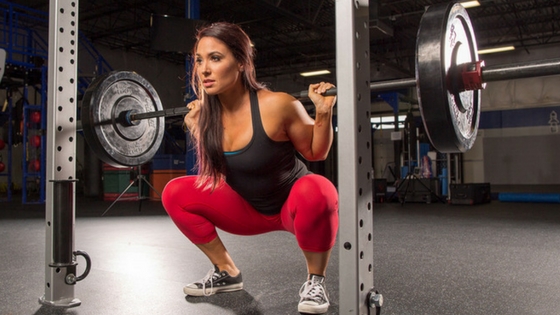
CONNECT WITH ME ON SOCIAL MEDIA
There are many different barbell variations to choose from, so I’m gonna breakdown the differences and what you want to consider when choosing.
- Mobility limitation and injuries
- Focus muscles and weaknesses
- Posture and muscular imbalances
These key considerations make the difference between developing your lower body the way you want it and wrecking your joints. If you’re not sure how you should be squatting, keep reading.
Barbell Back Squat
This is the most commonly used barbell squat, probably because its the least technical one. Mounting the bar on your back allows you to squat more weight than other variations.
When done right, through a full range of motion, your quadriceps, hamstrings, and glutes are targeted pretty evenly. The bottom position is where you get the most muscular activation in the glutes and hamstrings.
Toes should be slightly turned out with your knees tracking in line with the toes. Forcing your knees out over your toes during each rep will protect your knees and really target your glute medius.
The glute medius sits right above your glute maximus and completes the roundness and fullness of your glutes.
Barbell Low Bar Back Squat
This is a slightly different variation of the conventional back squat where the bar rests a bit lower on your back. This changes the center of gravity, creating more of a bend at the hip and less of a bend at the knee.
This slight change in form targets the glutes and hamstrings more and is a great alternative to those with limited ankle mobility, or over developed quadriceps.
This squat variation places more of a demand on the torso, so if you have a weak core, back injury, or poor posture, this may not be the one for you.
Rest the bar right above your rear delts instead of directly at the top of your trapezius. Pull the bar in tight, squeezing your shoulder blades together.
Barbell Sumo Squat
The sumo squat is a great exercise for total glute development with a major focus on the glute medius. Being that the hamstrings aren’t as involved in this movement means more focus on the quadriceps.
This squat variation doesn’t require a great deal of mobility which is great for those who have limited hip and ankle mobility. Just make sure you’re doing accessory exercises for working on your limitations.
The stance here is going to be much wider, which is going to require a bit more flexibility in the inner thighs. You want to make sure that you maintain a vertical shin in the bottom position. As usual, your knees she track in line with your toes.
Barbell Front Squat
The front squat is a bit more technical because of its emphasis on torso stability and shoulder mobility. On the flip-side the key advantages are the safety. You don’t have to worry about getting stapled under the weight because you can just dump it in front of you.
The primary reasons for front squatting are quadricep development, core strength development, and posture improvement. This carries over to all of the other barbell squats making you much more efficient at squatting.
Staying as vertical as possible throughout each rep is a key focus here. Keep your chest up and elbows pointed straight ahead. Do not let your elbows touch your thighs.
In the video I show you a couple of techniques to use if you have limited shoulder mobility and can’t quite get the front racked position.
Barbell Zercher Squat
The zercher squat is a great alternative to the conventional barbell front squat. It doesn’t require the shoulder mobility, or as much torso stability. You might want to start here when first getting into front loading.
Start with the bar resting on your thighs and hook your arms under the bar. The bar should rest cradled right on the inside of the bend in your arm. Make sure the bar, and your arms do not touch your thighs.
This barbell variation puts much more concentration on the legs by taking a great deal of stress off of the torso. Still, you need to focus on maintaining a vertical position.
Having the bar rest in the crease of your arm may be a bit uncomfortable. Use a cushion on the bar for extra support.
Tribe By Noire

I’ve created this platform to help you become the most powerful version of yourself through fitness, plant based nutrition, and mindset coaching.
copyright © 2018 Tribe By Noire. All Rights Reserved
